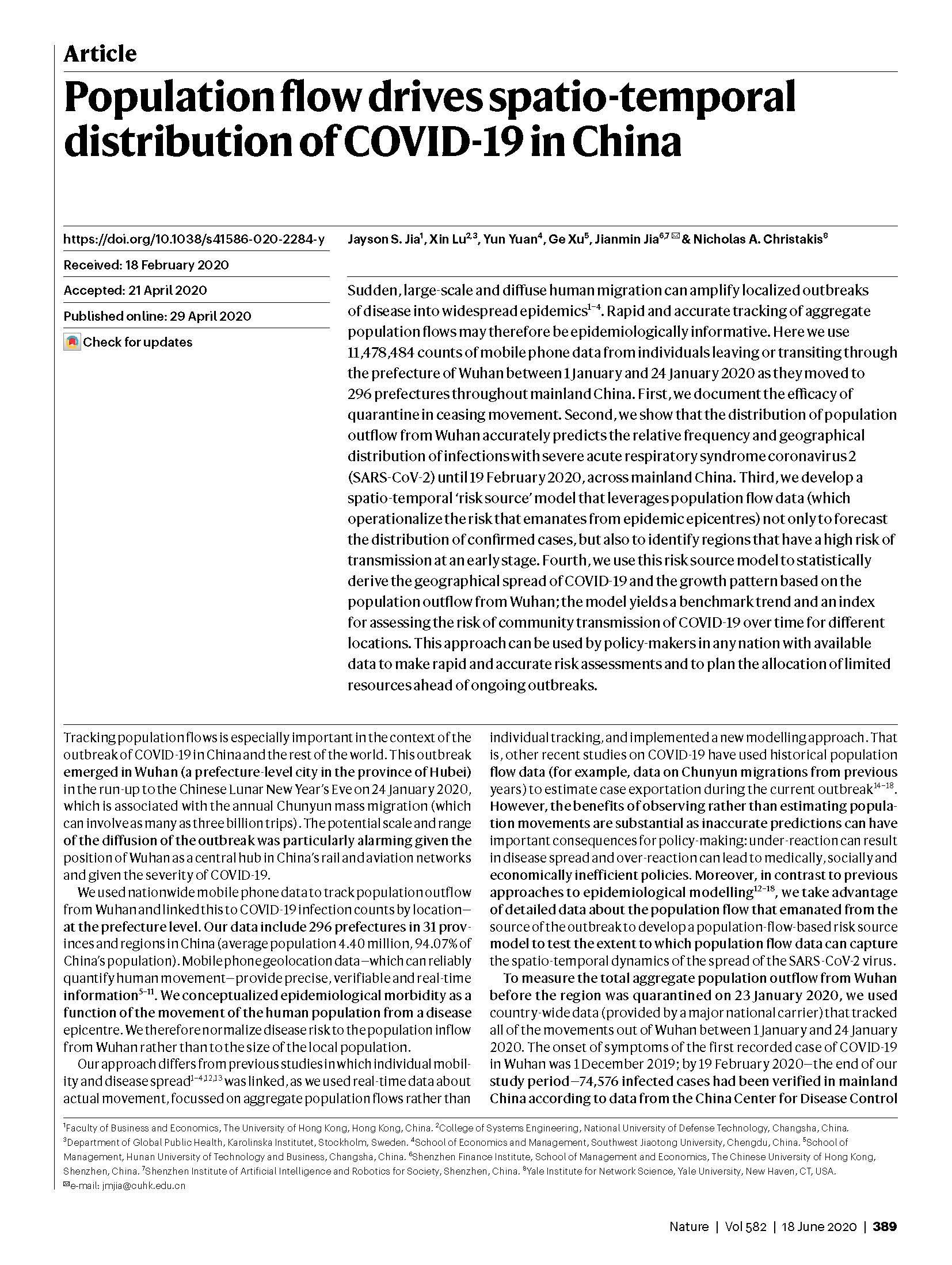
Population flow drives spatio-temporal distribution of COVID-19 in China
Abstract
Sudden, large-scale and diffuse human migration can amplify localized outbreaks of disease into widespread epidemics. Rapid and accurate tracking of aggregate population flows may therefore be epidemiologically informative. Here we use 11,478,484 counts of mobile phone data from individuals leaving or transiting through the prefecture of Wuhan between 1 January and 24 January 2020 as they moved to 296 prefectures throughout mainland China. First, we document the efficacy of quarantine in ceasing movement. Second, we show that the distribution of population outflow from Wuhan accurately predicts the relative frequency and geographical distribution of infections with severe acute respiratory syndrome coronavirus 2 (SARS-CoV-2) until 19 February 2020, across mainland China. Third, we develop a spatio-temporal ‘risk source’ model that leverages population flow data (which operationalize the risk that emanates from epidemic epicentres) not only to forecast the distribution of confirmed cases, but also to identify regions that have a high risk of transmission at an early stage. Fourth, we use this risk source model to statistically derive the geographical spread of COVID-19 and the growth pattern based on the population outflow from Wuhan; the model yields a benchmark trend and an index for assessing the risk of community transmission of COVID-19 over time for different locations. This approach can be used by policy-makers in any nation with available data to make rapid and accurate risk assessments and to plan the allocation of limited resources ahead of ongoing outbreaks.
Citation:
J.S. Jia, X. Lu, Yuan Y., G. Xu, J. Jia, and N. A. Christakis, “Population flow drives spatio-temporal distribution of COVID-19 in China,” Nature, 582(7812), 389–394 (Apr 2020) DOI: 10.1038/s41586-020-2284-y